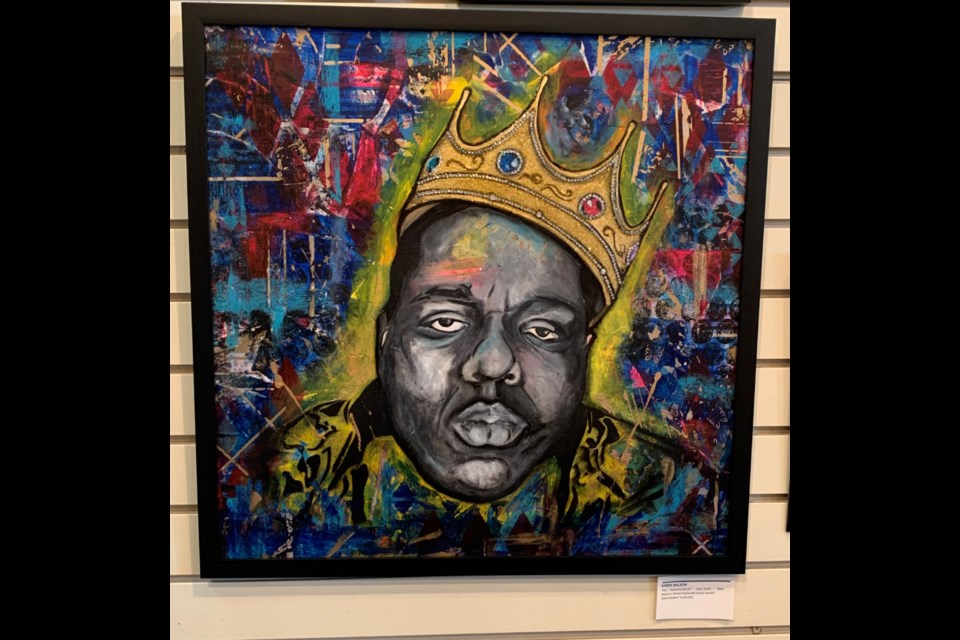Originally from Kenton, Kerri Wilson (nee Hunter) knows the beneficial aspect art can have on a person. That is why she is so passionate about sharing her gift
She was diagnosed with multiple sclerosis (MS) when she was just 19 years old, after losing her own mother to the disease at a very young age. Wilson has learned to deal with the condition her entire adult life, calling it her “invisible illness”, but has never let it get the best of her and refuses to be labeled as a victim. Quite the contrary, she embraces life and lives it to the fullest with tenacious determination.
She underwent liberation therapy in California back in 2012 for which she had some success and relief. However, a disease triggered by stress, MS raised its ugly head again when the world was thrown headfirst into the pandemic back in early 2020.
As a result, she suffered a relapse. Stressors such as work demands caused by the pandemic and taxing volunteer commitments paired with her dedicated work ethic, people pleasing attitude and unwillingness to put herself first, caused her to spiral downward until quite literally, her brain broke.
It was only then that she turned inward to the thing she knew could bring her solace and healing – art.
“I felt lost – and knew I needed to do something to fill the emptiness and sense of who I was now – so I asked myself, what is the thing I always said, ‘when I have time, I’ll do it’ – the answer was art.”
Art was her first love, but one Wilson had put on the back burner for quite a while. However, her condition had now gifted her the time and opportunity to explore it.
“When I suddenly found myself with a brain that I didn’t recognize, I discovered that my childhood passion of creating, was my gateway to connecting with my emotions and embracing my authentic self,” said Wilson about her initial reacquaintance.
She continued. “At first, I was only inspired to do art as a way to distract myself from what I was going through, but I soon discovered that art had a way of giving me more than that. It was a way to deal with the physical and cognitive changes my body was going through as well as the emotions associated with not only my illness, but my self-worth and change in routine (not being able to go to work).”
In doing so, she discovered a unique artform that has been used for self-healing and emotional release.
“NeuroGraphica allowed me the time to connect my emotions to my body and my thoughts.”
She was so inspired by her own results, that she delved deeper, eventually taking training to become certified as a NeuroGraphica specialist, one of the only ones in Manitoba.
“I pursued courses for my own personal interest and also as a way suggested by my doctor to work my brain and challenge myself - instead of letting it get used to being broken,” she explained.
This came with its own set of challenges due to her limited capacity.
“I really struggled with left brain activities required to use technology and stay focused during the live sessions,” Wilson
said of the training which took nine months to complete. “I ran out of energy and felt deep emotions while doing the work. I had to watch the replays several times. But I didn’t give up.”
She is now able to lead others in tuning in to their own subconscious feelings, to gain clarity and make progress towards a solution or goal.
“It’s not about making pretty abstract art,” she said about the universality of the process and the specific algorithms used in the method. “It is an innovative drawing method which deals directly with our emotions and impressions in a meditative way, bypassing our analytical mind. Anyone can do it.”
It was while she was taking NeuroGraphica training that she also stumbled onto SoulCollage,
“SoulCollage helps me to be more present with myself, to use my intuition and to really think about who I am,” she said. “It helps me to accept and understand my past, to be present and to feel less alone as I’m adapting to life. It’s very powerful in connecting to the subconscious mind – discovering deeper meaning from the images that are intuitively selected.”
Both are registered and copyrighted methods of therapeutic art, not to be confused with art therapy.
“The similarities of each are that they are both based on psychology, they both deal with subconscious thoughts and they both are very personal to the artist. They can be transformative and therapeutic, and both methods focus most on the process, not the final product or image created. The act of being present with ourselves entirely, that’s the real masterpiece here.”
Kerri Wilson will be doing a presentation to seniors about art as a wellness modality in Virden’s Spring Wellness Day planned for April 17.




